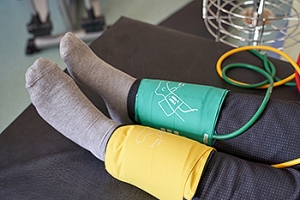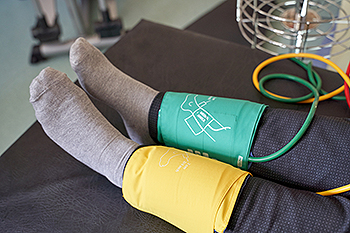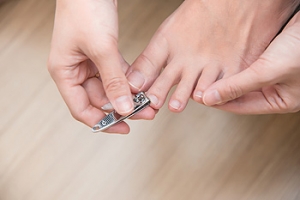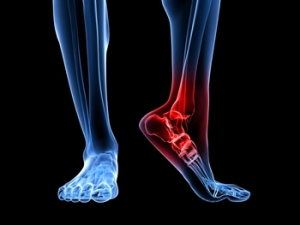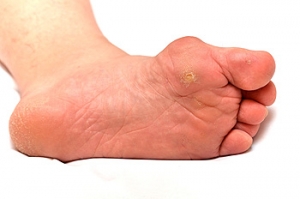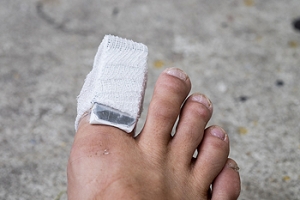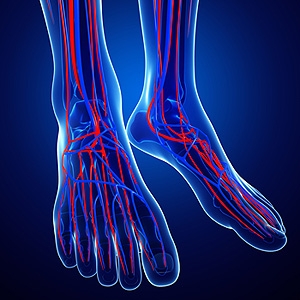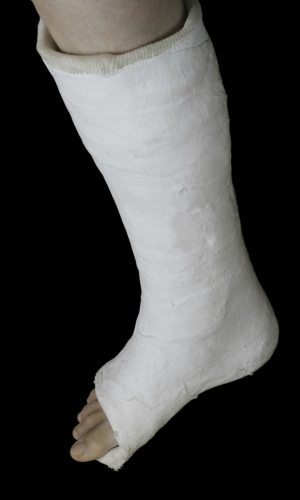Connect With Us
Super User
Treating Heel Pain with Shockwave Therapy
Shockwave therapy is one treatment option for plantar fasciitis, a condition that causes heel and foot inflammation and pain. This type of injury is often caused by overworking the feet. Heel pain is most common in people that exercise often, individuals who are overweight, and people whose profession require them to stand for long periods of time.
Heel pain can be caused by a number of problems including ill-fitting shoes, strenuous exercise routines or work hazards. Simple treatment options involve buying new shoes, taking ibuprofen, doing heel and foot exercises, and resting your feet. For severe cases, shockwave therapy can be considered a more viable form of treatment.
Shockwave therapy should be considered for patients that have had unsuccessful treatment or whose heel pain has lasted for more than six months. In shockwave therapy, a device delivers shockwaves to the patient’s body, which jumpstart the body’s repair mechanisms. These mechanisms then begin working more effectively to repair damage done to the heel area.
Shockwave therapy also helps eliminate pain in the heel area. When the body’s natural repair mechanisms are triggered, tissue healing in the body is sped up. This leads to pain reduction after pain transmission nerves are stimulated.
Shockwave therapy eliminates the risk factors associated with surgery, such as the use of anesthetics, and is less invasive. Since this technique also helps improve the body’s natural healing techniques, recovery time should be shorter than surgical procedures.
Discomfort issues can also be a side effect of treatment. Short-term issues normally include skin bruising, minor pain during and after treatment, swelling of the heel, and discolored tissue. However, these side effects of shockwave therapy usually disappear after a few days. The fast recovery time of shockwave therapy makes it easy for patients to return to their daily routines.
Like most types of treatments, surgeries, and medications, shockwave therapy is not for everyone. Potential patients with heart conditions and people with pacemakers should not be considered for this technique. People on certain types of medications, usually medications affecting blood clotting, would be ineligible for shockwave therapy. Children and pregnant women should avoid this treatment option as well.
Overall, shockwave therapy could be a great option for heel pain. It is less invasive than surgery, helps trigger natural healing mechanisms, and should be considered by people who have had long bouts of heel pain or tried conventional treatment options that were unsuccessful.
What Is Peripheral Artery Disease?
Peripheral artery disease (PAD) causes a narrowing of arteries in the limbs that are not close to the center of the body, such as the legs and feet. These arteries, which carry blood from the heart, become blocked by a buildup of plaque and cannot deliver adequate blood supply to muscles and tissues. This can result in muscle cramping while exercising (claudication) that does not go away after you stop. You may also experience slow-healing foot wounds and slower growth of leg hair and toenails. The skin on your legs may also have a shiny appearance. PAD is potentially dangerous because it increases the risk of a heart attack or stroke. Also, tissue which does not receive enough blood can become infected or die (gangrene) which, left untreated, may lead to a life-threatening blood infection called sepsis. It is important to pay attention and see a podiatrist if your body gives you any warning signs of PAD.
Peripheral artery disease can pose a serious risk to your health. It can increase the risk of stroke and heart attack. If you have symptoms of peripheral artery disease, consult with one of our podiatrists from New England Foot and Ankle. Our doctors will assess your condition and provide you with quality foot and ankle treatment.
Peripheral artery disease (PAD) is when arteries are constricted due to plaque (fatty deposits) build-up. This results in less blood flow to the legs and other extremities. The main cause of PAD is atherosclerosis, in which plaque builds up in the arteries.
Symptoms
Symptoms of PAD include:
- Claudication (leg pain from walking)
- Numbness in legs
- Decrease in growth of leg hair and toenails
- Paleness of the skin
- Erectile dysfunction
- Sores and wounds on legs and feet that won’t heal
- Coldness in one leg
It is important to note that a majority of individuals never show any symptoms of PAD.
Diagnosis
While PAD occurs in the legs and arteries, Podiatrists can diagnose PAD. Podiatrists utilize a test called an ankle-brachial index (ABI). An ABI test compares blood pressure in your arm to you ankle to see if any abnormality occurs. Ultrasound and imaging devices may also be used.
Treatment
Fortunately, lifestyle changes such as maintaining a healthy diet, exercising, managing cholesterol and blood sugar levels, and quitting smoking, can all treat PAD. Medications that prevent clots from occurring can be prescribed. Finally, in some cases, surgery may be recommended.
If you have any questions, please feel free to contact one of our offices located in Chelmsford and Newburyport, MA . We offer the newest diagnostic and treatment technologies for all your foot care needs.
Read more about Peripheral Artery DiseaseStop and Drop the Flip-Flops
 Flip-flops are the go-to shoe of the summer, but did you know that your flip-flops may be harming your feet? Because they provide little support to the foot as you walk, they can cause pain in the bottom of the foot or heel, especially if you have flat feet. They may also increase your likelihood of slipping, tripping, or falling as the loose shoes flop around while you walk. The effort required of your toes to keep the shoes on your feet can also lead to various foot deformities, such as hammertoes and bunions. Flip-flops that place a plastic strap between your tender toes can increase your chances of developing painful blisters as you walk. Finally, the porous foam material that most flip-flops are made of can trap fungus inside your shoes, which can eventually infect your feet. For these reasons, it is best to steer clear of flip-flops, or to at least wear them for only short periods of time. For more information on footwear, please speak with a podiatrist.
Flip-flops are the go-to shoe of the summer, but did you know that your flip-flops may be harming your feet? Because they provide little support to the foot as you walk, they can cause pain in the bottom of the foot or heel, especially if you have flat feet. They may also increase your likelihood of slipping, tripping, or falling as the loose shoes flop around while you walk. The effort required of your toes to keep the shoes on your feet can also lead to various foot deformities, such as hammertoes and bunions. Flip-flops that place a plastic strap between your tender toes can increase your chances of developing painful blisters as you walk. Finally, the porous foam material that most flip-flops are made of can trap fungus inside your shoes, which can eventually infect your feet. For these reasons, it is best to steer clear of flip-flops, or to at least wear them for only short periods of time. For more information on footwear, please speak with a podiatrist.
Flip-flops are not always the best choice of footwear. If you have any concerns about your feet or ankles, contact one of our podiatrists from New England Foot and Ankle. Our doctors will assist you with all of your foot and ankle needs.
Flip-Flops and Feet
When the weather starts warming up, people enjoy wearing flip-flops. Flip-flops are comfortable, stylish, and easy to slip on and off; they're perfect for any summer beach goer. However, these shoes can cause harm to the feet.
How Can Flip-Flops Affect Me Long-Term?
- Ankle problems
- Hip problems
- Lower back problems
- Pain in the balls of the feet
- Problems with foot arches
- Changes in the way you walk
Are There Injuries Associated with Flip-Flops?
Yes. Since flip-flops are relatively weak and do not provide the same amount of support as sneakers, people who wear flip-flops regularly are more susceptible to injuries. On top of that, the open nature of the shoe makes your feet more prone to other problems, such as cuts and even infections. Common injuries and ailments include:
- Sprained ankles
- Blisters
- Infections
- Cuts and Scrapes
I like Wearing Flip-Flops. Are There Safe Alternatives?
When buying flip-flops, try to find ones that have sturdy soles and that are made of high-quality materials that will support for your feet. These flip-flops will cost more but will also last longer as a result.
If you have any questions please feel free to contact one of our offices located in Chelmsford and Newburyport, MA . We offer the newest diagnostic and treatment technologies for all your foot and ankle needs.
Flip Flops and Feet
Flip flops are often a popular choice of footwear for many people. Flip flops allow your feet to breathe and give your toes the freedom of movement. They are easy to slip on and can be worn with virtually any style of clothing. Flip flops, however, despite their many benefits, can be detrimental for your foot health.
Despite their comfortableness, frequently wearing flip flops can create problems in the lower body over time. Issues mainly stem from the fact that people walk differently in flip flops compared to other footwear, such as sneakers. This is due to a change in one’s natural gait, which therefore creates stress in different parts of the body while hindering the body’s natural posture. Problems can also arise in the arches and balls of the feet. Flip flops provide little to no support to these areas.
Aside from long-term problems, flip-fops can also create short-term issues as well, such as ankle sprains and blisters. Weak materials that are flexible and bendable are generally used to manufacture flip flops. These materials make its wearers prone to both tripping and injuring their ankles. Flip flops can create blisters as the material rubs against the foot. People are much more at risk for infection while wearing flip flops due to their openness. This also makes it easier to scrape and cut the foot since there is a lack of protection. If these cuts are left untreated and uncovered, the risk then becomes greater.
To prevent the aforementioned occurrences, purchase a pair of flip flops that offer significant protection. The soles of the flip flops should not be floppy, but sturdy and firm, and should not significantly bend or wiggle when lifted from the floor. Flip flops made of high-quality materials will not be affected by this problem. While higher quality flip flops may be more expensive, they will last longer and provide better protection compared to a cheaper pair. Brand name flip flops sold from a quality manufacturer are a dependable option.
There is no problem in wearing your favorite pair of flip flops so as long as you do not wear them daily or for extended periods of time. Flip flops should be replaced every 3-4 months to ensure that they provide your feet with the best protection.
How to Keep Diabetic Feet Healthy
 Many diabetics incur nerve damage, often making it difficult to feel sores, blisters, or cuts. Checking the feet nightly can be helpful in preventing infections; however, it may be difficult for the diabetic patient to check their feet due to arthritis, diminished eyesight or possible back problems. Having someone check the feet daily or using a small mirror may be beneficial in observing the soles of the feet. Symptoms to look for include any type of irritation, redness, or callus; additionally, paying extra attention to the toes and the ball of the foot is crucial in noticing foot ulcers. Moisturizing is necessary in preventing dry skin, which may cause cracked heels that can become infected. If an electric blanket is used, it may be wise to not use it because of reduced feeling in the feet. Additionally, ice packs can cause numbness in the feet and may not be recommended for this reason. Trimming the toenails is important to do with clippers that are designed for toenails, thereby preventing injuries to the foot. Please consult your podiatrist for advice in keeping your feet healthy
Many diabetics incur nerve damage, often making it difficult to feel sores, blisters, or cuts. Checking the feet nightly can be helpful in preventing infections; however, it may be difficult for the diabetic patient to check their feet due to arthritis, diminished eyesight or possible back problems. Having someone check the feet daily or using a small mirror may be beneficial in observing the soles of the feet. Symptoms to look for include any type of irritation, redness, or callus; additionally, paying extra attention to the toes and the ball of the foot is crucial in noticing foot ulcers. Moisturizing is necessary in preventing dry skin, which may cause cracked heels that can become infected. If an electric blanket is used, it may be wise to not use it because of reduced feeling in the feet. Additionally, ice packs can cause numbness in the feet and may not be recommended for this reason. Trimming the toenails is important to do with clippers that are designed for toenails, thereby preventing injuries to the foot. Please consult your podiatrist for advice in keeping your feet healthy
Diabetic foot care is important in preventing foot ailments such as ulcers. If you are suffering from diabetes or have any other concerns about your feet, contact one of our podiatrists from New England Foot and Ankle. Our doctors can provide the care you need to keep you pain-free and on your feet.
Diabetic Foot Care
Diabetes affects millions of people every year. The condition can damage blood vessels in many parts of the body, especially the feet. Because of this, taking care of your feet is essential if you have diabetes, and having a podiatrist help monitor your foot health is highly recommended.
The Importance of Caring for Your Feet
- Routinely inspect your feet for bruises or sores.
- Wear socks that fit your feet comfortably.
- Wear comfortable shoes that provide adequate support.
Patients with diabetes should have their doctor monitor their blood levels, as blood sugar levels play such a huge role in diabetic care. Monitoring these levels on a regular basis is highly advised.
It is always best to inform your healthcare professional of any concerns you may have regarding your feet, especially for diabetic patients. Early treatment and routine foot examinations are keys to maintaining proper health, especially because severe complications can arise if proper treatment is not applied.
If you have any questions please feel free to contact one of our offices located in Chelmsford and Newburyport, MA . We offer the newest diagnostic and treatment technologies for all your foot and ankle needs.
What’s Causing My Heel Pain?
 The heel is comprised of numerous tendons, ligaments, and fatty tissue. Common causes of pain in the heel may include possible stress fractures, bursitis, and obesity, and can typically be treated with ice packs, foot massages, and exercises designed to flex the foot. Probable diagnosis may include plantar fasciitis, heel spurs, and Sever’s disease. Refraining from activities that may have caused the pain not only reduces the stress on the heel, but will help in healing the tendons. This pain is commonly avoided by choosing shoes with laces for a firmer fit, discarding shoes with heels that are worn, and stretching the foot by warming up before a sports related activity. A consultation with a podiatrist is advised in properly diagnosing the cause of the pain, in addition to discovering the best treatment options available.
The heel is comprised of numerous tendons, ligaments, and fatty tissue. Common causes of pain in the heel may include possible stress fractures, bursitis, and obesity, and can typically be treated with ice packs, foot massages, and exercises designed to flex the foot. Probable diagnosis may include plantar fasciitis, heel spurs, and Sever’s disease. Refraining from activities that may have caused the pain not only reduces the stress on the heel, but will help in healing the tendons. This pain is commonly avoided by choosing shoes with laces for a firmer fit, discarding shoes with heels that are worn, and stretching the foot by warming up before a sports related activity. A consultation with a podiatrist is advised in properly diagnosing the cause of the pain, in addition to discovering the best treatment options available.
Many people suffer from bouts of heel pain. For more information, contact one of our podiatrists of New England Foot and Ankle. Our doctors can provide the care you need to keep you pain-free and on your feet.
Causes of Heel Pain
Heel pain is often associated with plantar fasciitis. The plantar fascia is a band of tissues that extends along the bottom of the foot. A rip or tear in this ligament can cause inflammation of the tissue.
Achilles tendonitis is another cause of heel pain. Inflammation of the Achilles tendon will cause pain from fractures and muscle tearing. Lack of flexibility is also another symptom.
Heel spurs are another cause of pain. When the tissues of the plantar fascia undergo a great deal of stress, it can lead to ligament separation from the heel bone, causing heel spurs.
Why Might Heel Pain Occur?
- Wearing ill-fitting shoes
- Wearing non-supportive shoes
- Weight change
- Excessive running
Treatments
Heel pain should be treated as soon as possible for immediate results. Keeping your feet in a stress-free environment will help. If you suffer from Achilles tendonitis or plantar fasciitis, applying ice will reduce the swelling. Stretching before an exercise like running will help the muscles. Using all these tips will help make heel pain a condition of the past.
If you have any questions please contact one of our offices located in Chelmsford and Newburyport, MA . We offer the newest diagnostic and treatment technologies for all your foot and ankle needs.
How to Prevent Corns
 Coupled with friction, an excessive amount of pressure on the feet is the most probable cause of corns. Corns can cause the skin to become dry and hardened; the skin’s consistency can also become soft and rubbery, which most often occurs between the toes. Infections can be common for patients with poor circulation or diabetes, and treatment may be necessary to prevent complications. Many options are available for treating corns. Pumice stones are an effective way to remove thickened skin from the foot, though if used incorrectly they can cause damage. The use of foam wedges between the toes may also be recommended to relieve pressure from soft corns. Wearing supportive shoes, preferably with a low heel, may be helpful as well. A consultation with a podiatrist is advised for a diagnosis and assessment of any underlying causes of corns.
Coupled with friction, an excessive amount of pressure on the feet is the most probable cause of corns. Corns can cause the skin to become dry and hardened; the skin’s consistency can also become soft and rubbery, which most often occurs between the toes. Infections can be common for patients with poor circulation or diabetes, and treatment may be necessary to prevent complications. Many options are available for treating corns. Pumice stones are an effective way to remove thickened skin from the foot, though if used incorrectly they can cause damage. The use of foam wedges between the toes may also be recommended to relieve pressure from soft corns. Wearing supportive shoes, preferably with a low heel, may be helpful as well. A consultation with a podiatrist is advised for a diagnosis and assessment of any underlying causes of corns.
If you have any concerns regarding your feet and ankles, contact one of our podiatrists of New England Foot and Ankle. Our doctors will treat your foot and ankle needs.
Corns: What Are They? and How Do You Get Rid of Them?
Corns can be described as areas of the skin that have thickened to the point of becoming painful or irritating. They are often layers and layers of the skin that have become dry and rough, and are normally smaller than calluses.
Ways to Prevent Corns
There are many ways to get rid of painful corns such as wearing:
- Well-fitting socks
- Comfortable shoes that are not tight around your foot
- Shoes that offer support
Treating Corns
Treatment of corns involves removing the dead skin that has built up in the specific area of the foot. Consult with Our doctors to determine the best treatment option for your case of corns.
If you have any questions please feel free to contact one of our offices located in Chelmsford and Newburyport, MA . We offer the newest diagnostic and treatment technologies for all your foot and ankle needs.
Symptoms of a Broken Toe
 Severe pain is likely to be experienced if you have a broken toe, and it will typically heal within 6 weeks. The toe may be tender, bruised, and swollen, often resulting in difficulty in walking. The treatment for a broken or bruised toe is the same, despite the fact that many people have trouble differentiating between the two. Temporary relief may come from elevating the foot, which generally helps in reducing any pain or swelling associated with this condition. Additionally, choosing to wear shoes that give the toes ample room to move may aid in diminishing any discomfort that may be experienced. If the toe is bent at an unnatural angle indicating a severe break, a consultation with a podiatrist is suggested for ways to properly treat your broken toe.
Severe pain is likely to be experienced if you have a broken toe, and it will typically heal within 6 weeks. The toe may be tender, bruised, and swollen, often resulting in difficulty in walking. The treatment for a broken or bruised toe is the same, despite the fact that many people have trouble differentiating between the two. Temporary relief may come from elevating the foot, which generally helps in reducing any pain or swelling associated with this condition. Additionally, choosing to wear shoes that give the toes ample room to move may aid in diminishing any discomfort that may be experienced. If the toe is bent at an unnatural angle indicating a severe break, a consultation with a podiatrist is suggested for ways to properly treat your broken toe.
A broken toe can be very painful and lead to complications if not properly fixed. If you have any concerns about your feet, contact one of our podiatrists from New England Foot and Ankle. Our doctors will treat your foot and ankle needs.
What to Know About a Broken Toe
Although most people try to avoid foot trauma such as banging, stubbing, or dropping heavy objects on their feet, the unfortunate fact is that it is a common occurrence. Given the fact that toes are positioned in front of the feet, they typically sustain the brunt of such trauma. When trauma occurs to a toe, the result can be a painful break (fracture).
Symptoms of a Broken Toe
- Throbbing pain
- Swelling
- Bruising on the skin and toenail
- The inability to move the toe
- Toe appears crooked or disfigured
- Tingling or numbness in the toe
Generally, it is best to stay off of the injured toe with the affected foot elevated.
Severe toe fractures may be treated with a splint, cast, and in some cases, minor surgery. Due to its position and the pressure it endures with daily activity, future complications can occur if the big toe is not properly treated.
If you have any questions please feel free to contact one of our offices located in Chelmsford and Newburyport, MA . We offer the newest diagnostic and treatment technologies for all your foot and ankle needs.
What are the Symptoms of Poor Circulation?
 If you observe that your toenails have developed a blue or grayish hue, you may have what is referred to as poor circulation. Since the feet are typically the first area of the body where this condition is noticed, a blue or gray tinge is generally a good indicator that circulation concerns exist. There may be several reasons for this ailment to occur, and these may include a sedentary lifestyle, type 2 diabetes, or obesity. Consistent movement during the day, such as standing or walking, can help in allowing the arteries to freely carry blood and oxygen. Common symptoms that may be experienced can include a weakened pulse, cold sensations in the feet, or you may notice discolored skin. There are avenues that can be implemented to help poor circulation, including smoking cessation, incorporating exercise into your daily routine, and wearing comfortable shoes. If you would like information about poor circulation, please schedule a consultation with a podiatrist to discuss the best preventative techniques that are right for you.
If you observe that your toenails have developed a blue or grayish hue, you may have what is referred to as poor circulation. Since the feet are typically the first area of the body where this condition is noticed, a blue or gray tinge is generally a good indicator that circulation concerns exist. There may be several reasons for this ailment to occur, and these may include a sedentary lifestyle, type 2 diabetes, or obesity. Consistent movement during the day, such as standing or walking, can help in allowing the arteries to freely carry blood and oxygen. Common symptoms that may be experienced can include a weakened pulse, cold sensations in the feet, or you may notice discolored skin. There are avenues that can be implemented to help poor circulation, including smoking cessation, incorporating exercise into your daily routine, and wearing comfortable shoes. If you would like information about poor circulation, please schedule a consultation with a podiatrist to discuss the best preventative techniques that are right for you.
While poor circulation itself isn’t a condition; it is a symptom of another underlying health condition you may have. If you have any concerns with poor circulation in your feet contact one of our podiatrists of New England Foot and Ankle. Our doctors will treat your foot and ankle needs.
Poor Circulation in the Feet
Peripheral artery disease (PAD) can potentially lead to poor circulation in the lower extremities. PAD is a condition that causes the blood vessels and arteries to narrow. In a linked condition called atherosclerosis, the arteries stiffen up due to a buildup of plaque in the arteries and blood vessels. These two conditions can cause a decrease in the amount of blood that flows to your extremities, therefore resulting in pain.
Symptoms
Some of the most common symptoms of poor circulation are:
- Numbness
- Tingling
- Throbbing or stinging pain in limbs
- Pain
- Muscle Cramps
Treatment for poor circulation often depends on the underlying condition that causes it. Methods for treatment may include insulin for diabetes, special exercise programs, surgery for varicose veins, or compression socks for swollen legs.
As always, see a podiatrist as he or she will assist in finding a regimen that suits you. A podiatrist can also prescribe you any needed medication.
If you have any questions, please feel free to contact one of our offices located in Chelmsford and Newburyport, MA . We offer the newest diagnostic and treatment technologies for all your foot care needs.
Possible Treatments Options for a Broken Ankle
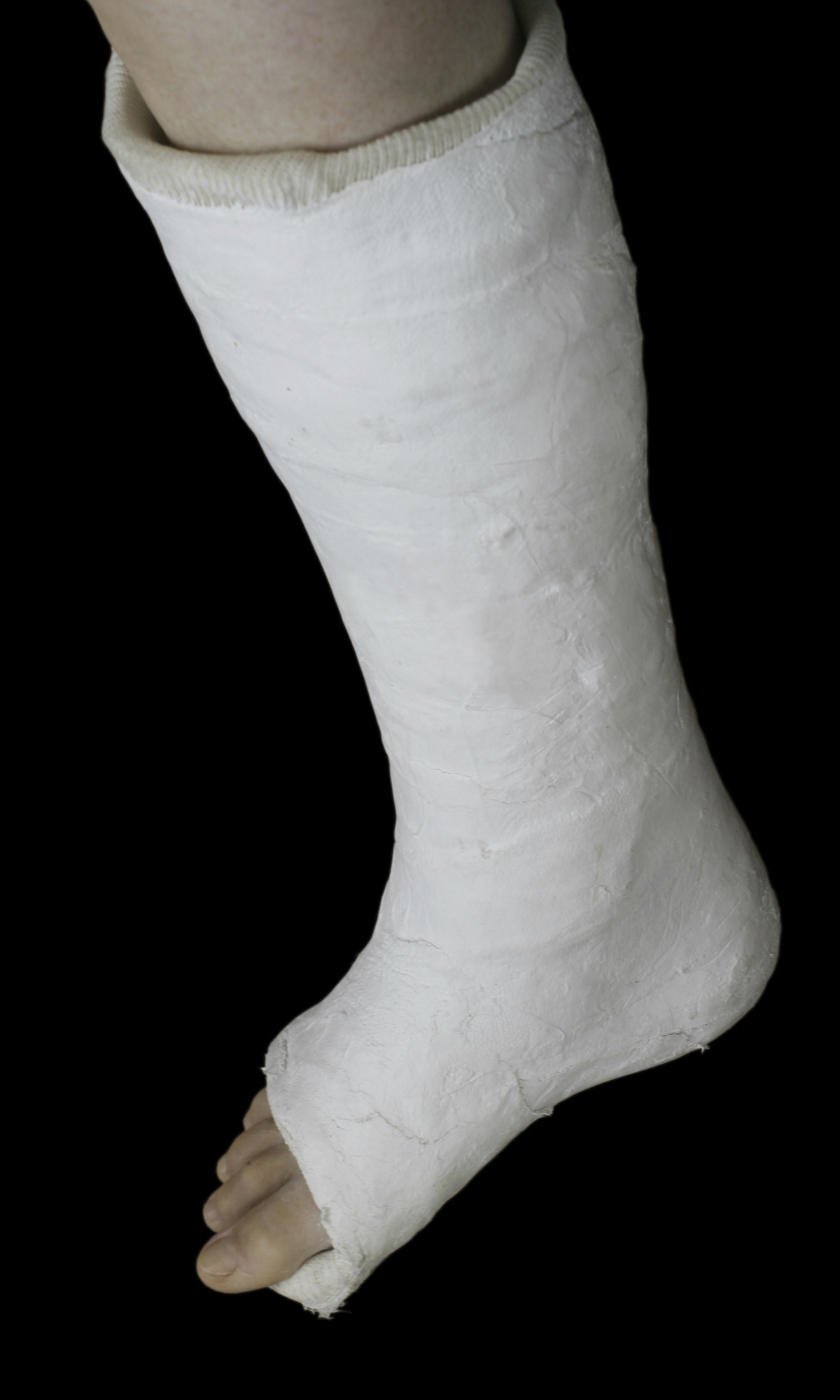 The pain and discomfort may be overwhelming if you experience a broken ankle. Research has shown that treatment needs to be started as quickly as possible and this may extend for a period of six to twelve weeks. There are specific symptoms that are associated with a broken ankle, including swelling and bruising, the inability to stand or walk on your foot, and the ankle appearing deformed if the bone is dislocated. An effective diagnosis is typically achieved by having an X-ray performed to determine the severity of the fracture. If the break is not severe, the patient may be fitted with a protective boot or a plaster cast in addition to using crutches, which are designed to keep the weight off the ankle. For more severe fractures, the bone may have to be realigned through manual manipulation or surgery, which may require wires and screws to be inserted into your foot. Please consult with a podiatrist if you feel you have broken your ankle to determine the proper treatment options.
The pain and discomfort may be overwhelming if you experience a broken ankle. Research has shown that treatment needs to be started as quickly as possible and this may extend for a period of six to twelve weeks. There are specific symptoms that are associated with a broken ankle, including swelling and bruising, the inability to stand or walk on your foot, and the ankle appearing deformed if the bone is dislocated. An effective diagnosis is typically achieved by having an X-ray performed to determine the severity of the fracture. If the break is not severe, the patient may be fitted with a protective boot or a plaster cast in addition to using crutches, which are designed to keep the weight off the ankle. For more severe fractures, the bone may have to be realigned through manual manipulation or surgery, which may require wires and screws to be inserted into your foot. Please consult with a podiatrist if you feel you have broken your ankle to determine the proper treatment options.
Broken ankles need immediate treatment. If you are seeking treatment, contact one of our podiatrists from New England Foot and Ankle. Our doctors can provide the care you need to keep you pain-free and on your feet.
Broken Ankles
A broken ankle is experienced when a person fractures their tibia or fibula in the lower leg and ankle area. Both of these bones are attached at the bottom of the leg and combine to form what we know to be our ankle.
When a physician is referring to a break of the ankle, he or she is usually referring to a break in the area where the tibia and fibula are joined to create our ankle joint. Ankles are more prone to fractures because the ankle is an area that suffers a lot of pressure and stress. There are some obvious signs when a person experiences a fractured ankle, and the following symptoms may be present.
Symptoms of a Fractured Ankle
- Excessive pain when the area is touched or when any pressure is placed on the ankle
- Swelling around the area
- Bruising of the area
- Area appears to be deformed
If you suspect an ankle fracture, it is recommended to seek treatment as soon as possible. The sooner you have your podiatrist diagnose the fracture, the quicker you’ll be on the way towards recovery.
If you have any questions, please feel free to contact one of our offices located in Chelmsford and Newburyport, MA . We offer the newest diagnostic and treatment technologies for all your foot care needs.
